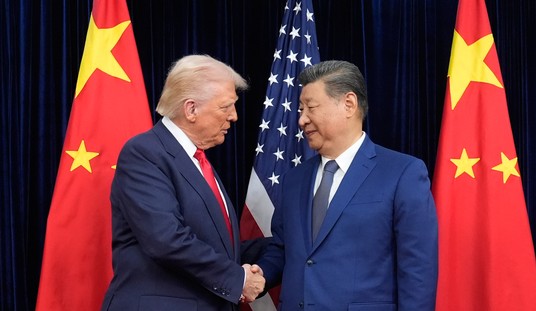There’s a lot we, and you, still don’t know about this disease, Paul reminds him (very politely). The models of the epidemic seem more wrong than right in their particulars, he stresses. Which is true but ironic in that Fauci has reportedly been one of the biggest skeptics of models behind closed doors in the White House.
But his point stands. We can’t confidently say that reopening will or won’t trigger a second wave. And by “we,” he means public health supremo Anthony Fauci.
You’re right, says Fauci, but I never claimed that my opinion should determine policy. More importantly, the fact that we don’t know much about the disease could cut either way. It could be that fears of a second wave are overblown. Or it could be that they’re underestimated. Just look at the data we’ve been getting over the past week about that mysterious inflammatory illness in children that appears to be linked to coronavirus. Kids are immune from the disease — we thought. Now, belatedly, there’s a clue that that’s not quite true.
What we’re seeing here, in other words, is a debate over risk tolerance. Fauci’s point is simple: Considering that this is a novel disease against which we have no natural immunity, that’s already killed 80,000 people in the span of two months, why err on the side of believing that reopening now will lead to a good outcome rather than a bad one?
And if the answer to that is, “Well, we can’t stay locked down forever,” Fauci would agree. That’s why he and his team came up with the federal guidelines. The public wanted to know when reopening would be worth the risk. Trump’s task force gave them an answer. The response in many states, encouraged by the president himself is, “Nah, takes too long.”
Sen. Rand Paul: "I don't think you're the end all. I don't think you're the one person that gets to make a decision."
Dr. Anthony Fauci: "I have never made myself out to be the end all and only voice in this. I'm a scientist, a physician and a public health official." pic.twitter.com/Nqlg3zOqn3
— CSPAN (@cspan) May 12, 2020
Don’t forget Sweden, says Paul to him at one point. Fair enough, but percentage-wise Sweden has seen more excess mortality over the past month than the United States. And because of the global downturn, they’re likely to see no economic benefit from their approach to the virus relative to the rest of Europe.
One Dem rep reacted to the clip above by reminding Paul that his home county in Kentucky has more coronavirus cases per capita than 51 out of 67 counties in New England, which Paul cites as an unusually hard-hit area. Meanwhile, inside the Trump White House:
Coronavirus infection rates are spiking to new highs in several metropolitan areas and smaller communities across the country, according to undisclosed data the White House’s pandemic task force is using to track rates of infection, which was obtained by NBC News…
The 10 top areas recorded surges of 72.4 percent or greater over a seven-day period compared to the previous week, according to a set of tables produced for the task force by its data and analytics unit. They include Nashville, Tennessee; Des Moines, Iowa; Amarillo, Texas; and — atop the list, with a 650 percent increase — Central City, Kentucky.
On a separate list of “locations to watch,” which didn’t meet the precise criteria for the first set: Charlotte, North Carolina; Kansas City, Missouri; Omaha and Lincoln, Nebraska; Minneapolis; Montgomery, Alabama; Columbus, Ohio; and Phoenix.
I’ll say this for Paul, though. I think he’s pinpointed the two most consequential mysteries about the disease so far, solutions to which would vastly improve our decision-making. One is whether antibodies to the virus produce durable immunity, a question in which Paul has a personal stake given that he contracted COVID-19 awhile ago. He’s impatient with scientists’ reluctance to say flatly that people who have recovered are now immune and can go back to work. I understand that, but I’m also not sure what the alternative is. Without a study to confirm immunity, how are world governments supposed to potentially tell tens of millions of recovered patients that they’re in the clear? Imagine if they gave that assurance without evidence and then some started getting sick again.
The second big mystery is how infectious children are. The subject of reopening schools came up earlier at today’s hearing because of how much depends on the answer. It’s not just that kids are falling behind in their educations, it’s that parents need child care during the day to be able to get back to work. We need to know how much of a risk would be posed by sending everyone back to class. There’s some evidence that it might be surprisingly minimal:
“Children under 10 are less likely to get infected than adults, and if they get infected, they are less likely to get seriously ill,” said Kári Stefánsson, in an interview following the publication of an Icelandic study he coauthored in The New England Journal of Medicine. “What is interesting,” he continued, “is that even if children do get infected, they are less likely to transmit the disease to others than adults. We have not found a single instance of a child infecting parents.”
The same conclusion has been reached by many others. A report released by the National Institute for Public Health and the Environment for the Netherlands found “no indications that children younger than 12 years were the first to be infected within the family.” Rather, it remarked, “The virus is mainly spread between adults and from adult family members to children.” A report of the WHO-China Joint Mission on Coronavirus Disease stated: “Of note, people interviewed by the Joint Mission Team could not recall episodes in which transmission occurred from a child to an adult.”
If most kids are so completely immune to the virus that they can’t even pass it along to mom and dad then our school problem is miraculously solved, and with it a lot of headaches for parents in the work force. You would think finding an answer would be a top priority for the feds and other countries. I’ve seen little mention of it in daily reading about COVID-19 in the past two months, though.
Here’s Fauci elsewhere during the hearing speculating that the true death toll from coronavirus is higher than the official death count, which is highly likely given the phenomenon of “excess deaths.” Worth noting, though: The true unemployment rate is no doubt higher than the official rate as well.
An important reminder that the reported U.S. death toll from Covid-19, 80,897, is an undercount:
"Most of us feel that the # of deaths are likely higher" than 80,000, Dr. Fauci says. "It almost certainly is higher." pic.twitter.com/wlzkCknwn8
— Brian Stelter (@brianstelter) May 12, 2020








Join the conversation as a VIP Member